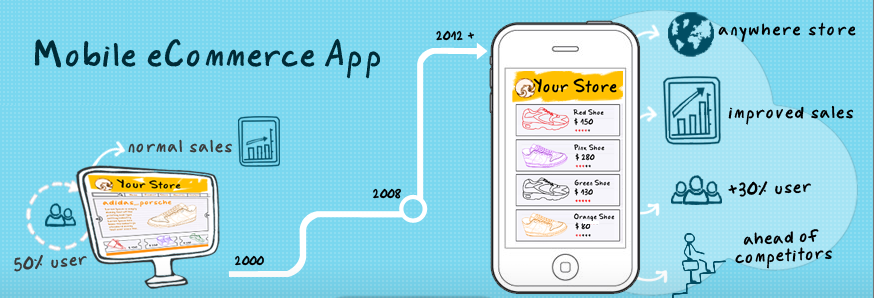While mobile search traffic and mCommerce keeps growing, mobile checkout optimization strategies and tips are needed to grow and expand revenues. A recorded number of shoppers are using smartphones for online purchases. Users prefer mobile websites over apps for a checkout process. You can of course follow the guidelines we listed here about what makes mobile apps perform badly or take a look at our general tips for CRO (Conversion Rate Optimization), but here are some additional, mCommerce-specific guidelines for optimizing mobile checkouts:
Better Web Page Loading:
If a page doesn’t open correctly on mobile devices, then more than 73% of consumers will not return to a website. Be sure that visitors see a page loading correctly within a website. 60% of local searches are done by mobile devices and tablets except for checkouts (Bizreports). 74% of mobile visitors entering a website with a loading time of 5 seconds will leave the website. Therefore, testing tools are needed to improve loading times.
Simple Checkouts:
People don’t feel safe using checkout; therefore, creating a checkout that is easy to use is one of the best optimization tips for mobile checkouts. Creating easy-to-use checkouts for consumers is needed to remove distractions, make your actions buttons stand out, and create a shorter checkout process.
Infographics Source: designinfographics.com
Speedy Checkout:
Speed is needed in checkout optimization. Here are some examples that indicate speed for checkout is equally important:
In 2006 Amazon stated in a report that 1% loss in revenue per 0.1s site delay occurred. If the page loading time delays by 1 second, then 11% fewer page views, 16% decrease in customer satisfaction, and 7% in conversions happens.
60% of web users say that they expect the loading time of a website to be at 3 seconds or less on their mobile devices.
Trust:
Customers don’t feel safe shopping and using a checkout on a website; therefore, they want to trust the checkout process. Adding testimonials, reviews, and/or trust icons makes it trusted and safe to customers.
Indicators of Progress in Checkouts:
Customers like to know how much progress they have made in the checkout process. Most customers are not patient in a long checkout process and need to know what their progress is by indicators such as Zalando’s progress bar showing four stages of checkout including delivery, address, payment, and summary.
Remove Distractions:
When an online shopper is in the checkout process, he or she has clearly expressed a willingness to pay. Internet customers have a low attention span and become distracted easily. In order to reduce distractions and keeps customers shopping you must decrease the number of outbound links, banners, and any other data that is irrelevant to the shopping experience — similar to the way it’s done in great landing pages. Online users might have questions about shipping guidelines, delivery, terms of service and more. All links like shipping info. and sales should open in a new window and be displayed easily so that shoppers don’t have to scroll down and then finish an action. A content-rich checkout will distract the online shopper from their purchasing decision.
Easier Checkout Access:
Be sure online customers can enter their shopping cart and the checkout area easily from any webpage to finish their payment quickly. A way to make their purchases easier is by triggering a pop up that directs to a quick checkout or asks them if they want to continue with shopping.
Better Payment Options:
If there are a few payment options in the checkout process, then the conversion optimization rate increases. Customers get to choose an option for checkout which is easy and quick for them. Display logos such as checkout with Amazon or Paypal while partnering with famous brands and increasing trust with brands and customers. During purchase on a mobile device, customers may have some questions or uncertainties; therefore, a way to optimize it is by adding a feature called “Click to call”. Customers can use “Click to call” immediately and ask you their questions. A person has to stand by the phone to receive calls and answers the questions from the customers. If there is no person standing by the phone, a simple chat feature connected by a plug is needed.
Deepak Wadhwani has over 20 years experience in software/wireless technologies. He has worked with Fortune 500 companies including Intuit, ESRI, Qualcomm, Sprint, Verizon, Vodafone, Nortel, Microsoft and Oracle in over 60 countries. Deepak has worked on Internet marketing projects in San Diego, Los Angeles, Orange Country, Denver, Nashville, Kansas City, New York, San Francisco and Huntsville. Deepak has been a founder of technology Startups for one of the first Cityguides, yellow pages online and web based enterprise solutions. He is an internet marketing and technology expert & co-founder for a San Diego Internet marketing company.




